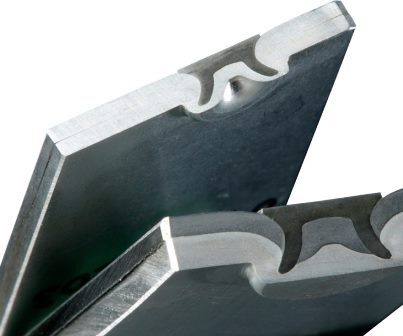

Stanley Engineered Fastening announced the launch of “next-generation self-pierce rivets” in North America in August.
The company presented the technology during the Global Automotive Lightweighting Material conference in August in Detroit and described the technology as “well-established in Europe,”
The new Range Rover Sport utilizes about 3,648 Stanley SPRs. In North America, SPRs are used in the joining process for the aluminium (and steel) Ford F-150 and Cadillac CT6. These joining techniques are also equally suitable for non-luxury collision repairers as they can help OEMs in cutting weight and improving value for money.
According to a spokeswoman for Stanley Self-pierce riveting (SPR) is:
“a process used to join two or more layers of materials without a predrilled or punched hole. This is done by driving a rivet through the top layers of material and upsetting the rivet in the lower layer (without piercing the layer) to form a durable joint. SPRs can effectively join together parts made of aluminium, steel, plastics, composites or a combination of materials”. 
Stanley’s news release aims to target OEMs looking at factory options. However, components that use a self-piercing rivet on the assembly line might demand repairers use the joining technique, or at least some other mechanical fastener. Stanley thinks those OEMs would use more self-piercing rivets.
“Demand for SPRs, which already are well-established in Europe, is on the rise in North America as automakers increasingly adopt materials such as aluminium, which is forecast to grow in the North American automotive industry,” Stanley said.
Stanley cited one of Ducker Worldwide’s aluminium forecasts, which projected aluminum sheet demand rising from less than 200 million pounds in 2012 to the billions within a decade.
“Within the same timeframe, every leading automaker is expected to have an aluminum body program in place, according to the study,” Stanley wrote. According to Stanley “several major North American automakers” that are using materials like aluminium and carbon fibre are interested in SPRs.
“Whether joining aluminium, steel, plastics, composites, or combinations of materials, SPR is ideal for joining sheet materials providing a watertight joint,” Stanley Breakthrough Innovation Vice President Siva Ramasamy said in a statement.



Responses






